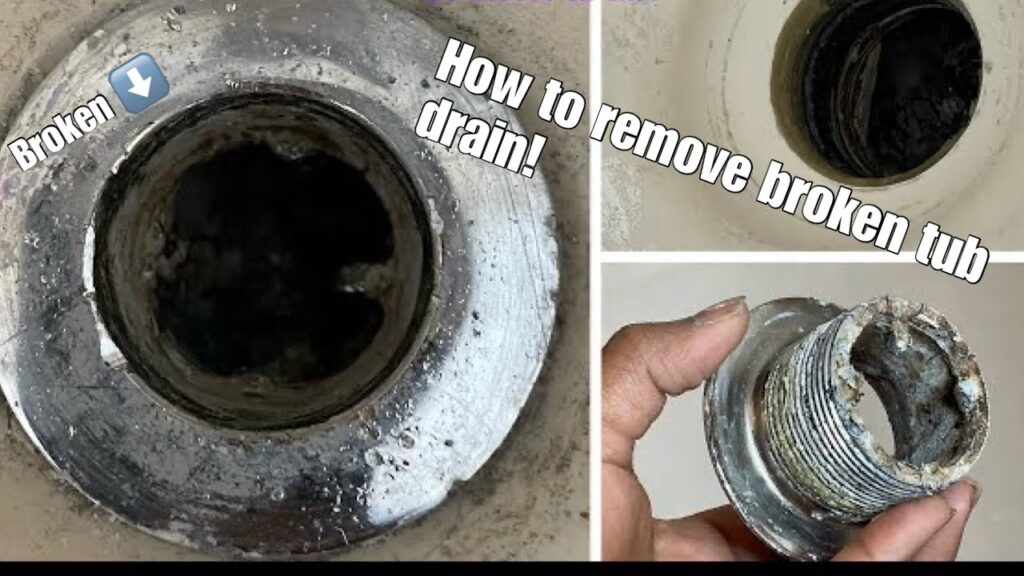How to Remove a Bathtub Drain
Introduction
Removing a bathtub drain can be a necessary task when dealing with a clogged or stuck drain. Whether you’re replacing the drain or simply clearing a blockage, understanding the process is crucial for maintaining your bathroom’s plumbing. In this comprehensive guide, we’ll walk you through the steps to remove a bathtub drain, provide tips for success, and address common questions you may have along the way.
Tools and Materials Needed
Before you begin, make sure you have the following tools and materials on hand:
- Pliers or channel locks
- Screwdriver (Phillips or flathead, depending on your drain)
- Tub drain removal tool or basin wrench
- Plumber’s putty or silicone sealant
- Bucket or towels
Step-by-Step Guide to Remove a Bathtub Drain
1. Prepare the Area
Begin by removing any stopper or drain cover from the drain opening. Use pliers or channel locks to unscrew the drain cap or pop-up stopper if present. Place a bucket or towels around the drain to catch any water or debris that may come out during the removal process.
2. Locate the Set Screw
Look for a small set screw on the drain cover or flange. This screw holds the drain in place. Use a screwdriver to loosen and remove the set screw.
3. Unscrew the Drain Flange
Using pliers or channel locks, grip the drain flange and turn it counterclockwise to unscrew it. If the flange is stuck, you may need to use a tub drain removal tool or basin wrench for extra leverage.
4. Remove the Drain
Once the flange is unscrewed, you should be able to pull the drain out of the tub. If it’s stuck, you may need to use a tub drain removal tool or basin wrench to grip the drain and twist it out.
5. Clean the Drain Opening
Use a wire coat hanger or plumber’s snake to remove any hair or debris from the drain opening. This will help ensure a proper seal when you reinstall the drain.
6. Prepare for Reinstallation
Apply a bead of plumber’s putty or silicone sealant around the underside of the new drain flange. This will help create a watertight seal when you reinstall the drain.
7. Reinstall the Drain
Insert the new drain into the drain opening and screw it in clockwise by hand until it’s snug. Avoid overtightening, as this can damage the tub. Reinstall the set screw to secure the drain in place.
8. Test for Leaks
Fill the tub with water and check for any leaks around the drain. If you see bubbles or water dripping, tighten the drain slightly or add more sealant.
Tips for Successful Drain Removal
- Work slowly and carefully to avoid damaging the tub or drain.
- Use penetrating oil or WD-40 on stuck drains to help loosen them.
- If the drain is extremely stuck, you may need to use a basin wrench or tub drain removal tool for extra leverage.
- Replace the rubber washer under the drain flange if it’s worn or damaged.
- Clean the drain opening thoroughly before reinstalling the drain to ensure a proper seal.
FAQ Section
Q: How do I remove a bathtub drain?
A: To remove a bathtub drain, first locate and remove the set screw, then unscrew the drain flange counterclockwise using pliers or a tub drain removal tool. Pull the drain out of the tub and clean the drain opening before reinstallation.
Q: What tools do I need to remove a bathtub drain?
A: You’ll need pliers or channel locks, a screwdriver, a tub drain removal tool or basin wrench, plumber’s putty or silicone sealant, and a bucket or towels.
Q: How do I remove a stuck bathtub drain?
A: If the drain is stuck, try using penetrating oil or WD-40 to help loosen it. You can also use a basin wrench or tub drain removal tool for extra leverage. If the drain is still stuck, you may need to call a plumber for assistance.
Q: How do I clean the drain opening after removing the drain?
A: Use a wire coat hanger or plumber’s snake to remove any hair or debris from the drain opening. This will help ensure a proper seal when you reinstall the drain.
Q: How do I reinstall the bathtub drain?
A: Apply plumber’s putty or silicone sealant around the underside of the new drain flange, insert the drain into the drain opening, and screw it in clockwise by hand until it’s snug. Reinstall the set screw to secure the drain in place.
Q: How do I test for leaks after reinstalling the drain?
A: Fill the tub with water and check for any leaks around the drain. If you see bubbles or water dripping, tighten the drain slightly or add more sealant.
Q: Can I remove a bathtub drain without a tub drain removal tool?
A: Yes, you can try using pliers or channel locks to unscrew the drain flange. However, a tub drain removal tool or basin wrench can provide extra leverage for stuck drains.
Conclusion
Removing a bathtub drain may seem like a daunting task, but with the right tools and a bit of patience, it’s a job that most homeowners can tackle. By following the steps outlined in this guide and taking precautions to avoid damage, you can successfully remove and reinstall your bathtub drain. Remember to work slowly, use the proper tools, and test for leaks to ensure a successful outcome.For more information on plumbing and drain maintenance, you can refer to the EPA’s Guide to Plumbing.
| Step | Description |
|---|---|
| Prepare the Area | Remove stopper, place bucket or towels around drain |
| Locate the Set Screw | Use screwdriver to remove set screw holding drain in place |
| Unscrew the Drain Flange | Use pliers or tub drain removal tool to unscrew flange counterclockwise |
| Remove the Drain | Pull drain out of tub, use removal tool for stuck drains |
| Clean the Drain Opening | Use wire coat hanger or snake to remove debris |
| Prepare for Reinstallation | Apply plumber’s putty or sealant to underside of new drain flange |
| Reinstall the Drain | Insert drain, screw in clockwise by hand until snug, reinstall set screw |
| Test for Leaks | Fill tub with water, check for bubbles or dripping around drain |
By following these steps and using the proper tools, you can successfully remove and reinstall your bathtub drain, ensuring a smooth and efficient plumbing system in your bathroom.



